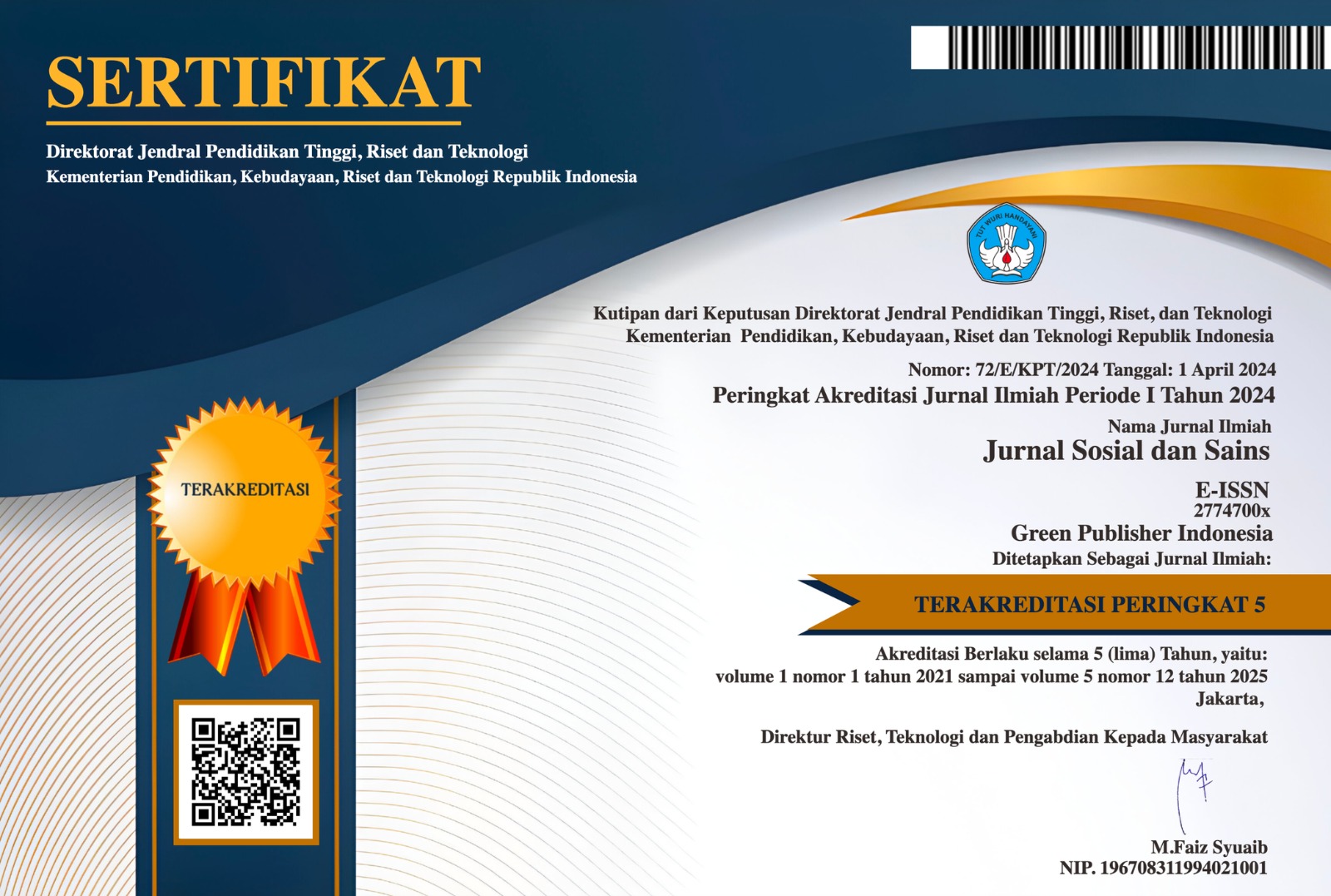The Relationship of Mother's Knowledge and Parenting Patterns with the Stunting Incident in Toddlers in the Loang Lembata Regency Public Health Centre Working Area
DOI:
https://doi.org/10.59188/jurnalsosains.v3i12.1148Keywords:
stunting, parenting, mothers, maternal parentin, public healthAbstract
Background: According to The World Health Organization (WHO) states that there are nutritional problems in toddlers, one of which is stunting , and lots of it found in a country one of them is developing in Indonesia, and still is becoming the main problem . National prevalence of stunting amounts to 26.9% and in 2021 it will be 24.4%. Is known that knowledge of mother and pattern foster care also becomes the reason for the occurrence of stunting.
Purpose: To analyse the relationship between mother's knowledge and parenting patterns on the incidence of stunting in toddlers in the Loang Public Health Centre working area, Lembata Regency.
Method: The type of research used is Observational Analytical. Population all mothers who have toddlers aged 12 – 59 months who live in the Loang Public Health Centre working area is 690 toddlers, a sample totalling 87 people. Taking samples using cluster sampling technique. The analysis used in research is chi-square analysis.
Results: Based on the chi-square analysis test , it shows that there is a relationship between the level of maternal knowledge and the incidence of stunting among toddlers at the Loang Public Health Centre, Lembata Regency, p=0.001. Whereas for maternal parenting patterns variable found there is a relationship between maternal parenting patterns and the incidence of stunting among toddlers at the Loang Public Health Centre, Lembata Regency is p=0.008
Conclusion: Based on results research above concluded lower there was connection between mother knowledge and maternal parenting patterns with stunting incident
References
ABSTRACT
Background: According to The World Health Organization (WHO) states that there are nutritional problems in toddlers, one of which is stunting , and lots of it found in a country one of them is developing in Indonesia, and still is becoming the main problem . National prevalence of stunting amounts to 26.9% and in 2021 it will be 24.4%. Is known that knowledge of mother and pattern foster care also becomes the reason for the occurrence of stunting.
Purpose: To analyse the relationship between mother's knowledge and parenting patterns on the incidence of stunting in toddlers in the Loang Public Health Centre working area, Lembata Regency.
Method: The type of research used is Observational Analytical. Population all mothers who have toddlers aged 12 – 59 months who live in the Loang Public Health Centre working area is 690 toddlers, a sample totalling 87 people. Taking samples using cluster sampling technique. The analysis used in research is chi-square analysis.
Results: Based on the chi-square analysis test , it shows that there is a relationship between the level of maternal knowledge and the incidence of stunting among toddlers at the Loang Public Health Centre, Lembata Regency, p=0.001. Whereas for maternal parenting patterns variable found there is a relationship between maternal parenting patterns and the incidence of stunting among toddlers at the Loang Public Health Centre, Lembata Regency is p=0.008
Conclusion: Based on results research above concluded lower there was connection between mother knowledge and maternal parenting patterns with stunting incident.
Published
How to Cite
Issue
Section
License
Copyright (c) 2023 Katharina Laurentia Monika Nago Adja, Lilik Djuari, Ahmad Suryawan, Woro Setia Ningtyas

This work is licensed under a Creative Commons Attribution-ShareAlike 4.0 International License.
Authors who publish with this journal agree to the following terms:
- Authors retain copyright and grant the journal right of first publication with the work simultaneously licensed under a Creative Commons Attribution-ShareAlike 4.0 International (CC-BY-SA). that allows others to share the work with an acknowledgement of the work's authorship and initial publication in this journal.
- Authors are able to enter into separate, additional contractual arrangements for the non-exclusive distribution of the journal's published version of the work (e.g., post it to an institutional repository or publish it in a book), with an acknowledgement of its initial publication in this journal.
- Authors are permitted and encouraged to post their work online (e.g., in institutional repositories or on their website) prior to and during the submission process, as it can lead to productive exchanges, as well as earlier and greater citation of published work.








